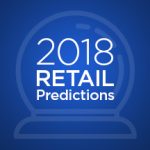The only real way to prove RIO (Return On Investment) for social media is through social advertising. That was a key statement by John Patterson, Associate Director of Social Media at Search Optics in his presentation yesterday at the Social Media Association of Michigan (SMAMi) Lunch and Learn event. It's not that other things you can do with social media aren't valuable, it's just that they don't have measurable metrics that give you concrete RIO numbers the way that paid social does. As further proof of this fact, Patterson pointed out that Facebook's organic reach dropped 81% from 2014 to 2015. The only effective way to reach more of your audience today is to pay to put your posts in front of them. And that's why he also doesn't recommend you pay to build your audience on social platforms – because you'll have to turn around and pay again to reach them.
Today, social networks are more focused on how they deliver to the bottom line and social advertising is the emphasis of how they get there. In doing this, they are moving from social metrics to business metrics, like leads, conversions, reach and consideration. Because of this, figuring your social advertising ROI is not about attribution and measurement, it's more about looking inside the marketing funnel. This marketing funnel consists of three layers: Awareness at the top, Consideration in the middle and Conversion at the bottom of the funnel. Let's look at each section separately:
Awareness: the top of the funnel is more about organic and promoted content. According to Patterson, you're not really thinking of ROI here, but about creating awareness and positioning your brand. These are hard metrics to prove ROI. Here, you can earn impressions and gain reach with promoted posts. A good way to capture attention at the top of the funnel is with auto play video posts. They allow you to tack the impact with live view counts and drive traffic with specific calls to action at the end of the videos.
This is also a good place to try Facebook's new Canvas ads. Canvas ads link to what is essentially a micro-site, but one that is only accessible within the Facebook universe. You can tell dynamic stories with Canvas and the experience is dynamic as well – loading 10 times faster than the mobile web. Within the Canvas "micro-site" you have eight different element options: header with a logo, full-screen image, text block, button for offsite links, image carousel, auto play video, full-screen tilt-to-pan and a product set.
Consideration: the second part of the funnel is more about organic content and advertising. Here, you're feeding your direct response objectives with offers and promotions, providing highly targeted content designed for conversion. It's also in this area of the funnel that you would use contests and give-aways. Drive traffic to your own website with "Click-to-Web" ads using precise targeting to get the right message in front of the right people. But, make sure you use a call to action button to drive people to take the appropriate actions and to give you a measurement point.
Another good paid social tool in the consideration part of the funnel is Facebook's Carousel ads. You can build multiple objective campaigns with them. And Carousel link ads drive 30 – 50% lower cost per conversion vs traditional click-to-web ads.
Conversion – the bottom of the marketing funnel is where you really see you ROI come to fruition. Here you can target hand raisers from your website or social network data. You can move your leads into conversion by serving up the right offers to motivate them. There are a number of ways to do this through social advertising. One way is to use local awareness ads. With them you could reach customers that are 50 miles or less from your business and guide them directly to your location from their smartphones. You can also use Facebook Offers to increase sales by reaching existing and new customers with a relevant offer. And make sure you build these offers in a way that they are easy to share. This is a great way to get people talking about you on Facebook and passing your offer on to others. You can measure your ROI success easily when people claim and redeem your offers.
Patterson closed out his Lunch and Learn presentation talking about how organic reach is declining on all social platforms. And by using social advertising offers, you can refocus your social efforts to address real business objectives instead of social vanity metrics. Social advertising is not about measurement or attribution, it's about understanding the purpose of each ad type and leveraging them correctly. Understanding where your user is int he purchase funnel allows you to select the advertising method that communicates to them effectively. Again, using social in non-paid ways does help your business in many ways, but only paid social gives you true ROI numbers you can quantify. At Yaffe, we've found this to be true for our clients as well.
All in all, I thought the first SMAMi Lunch and Learn was very worthwhile (granted, I'm biased as the organizations Vice President) and I learned some good, usable things from John. I look forward to next month's one featuring Matt Dibble on how to use video for effective storytelling.
Mike McClure, a non-paid endorser of paid social





